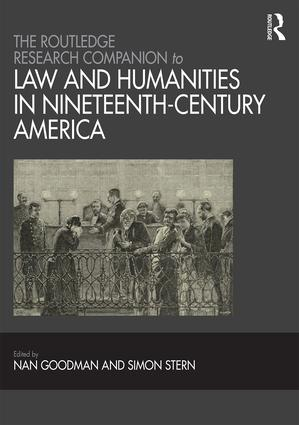
Nineteenth-century America witnessed some of the most important and fruitful areas of intersection between the law and humanities, as people began to realize that the law, formerly confined to courts and lawyers, might also find expression in a variety of ostensibly non-legal areas such as painting, poetry, fiction, and sculpture.
Bringing together leading researchers from law schools and humanities departments, this Companion touches on regulatory, statutory, and common law in nineteenth-century America and encompasses judges, lawyers, legislators, litigants, and the institutions they inhabited (courts, firms, prisons). It will serve as a reference for specific information on a variety of law- and humanities-related topics as well as a guide to understanding how the two disciplines developed in tandem in the long nineteenth century.